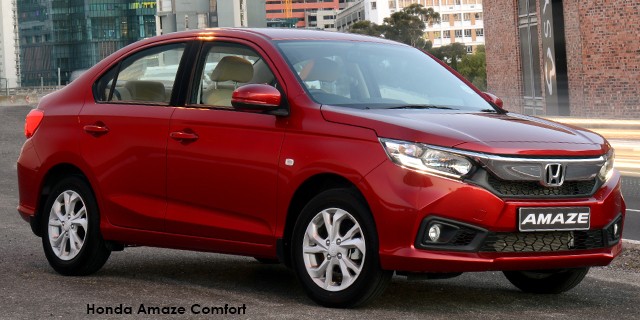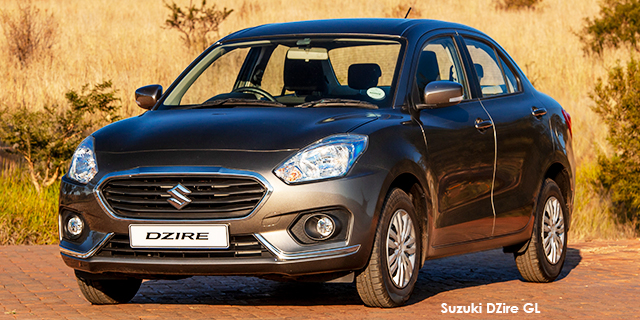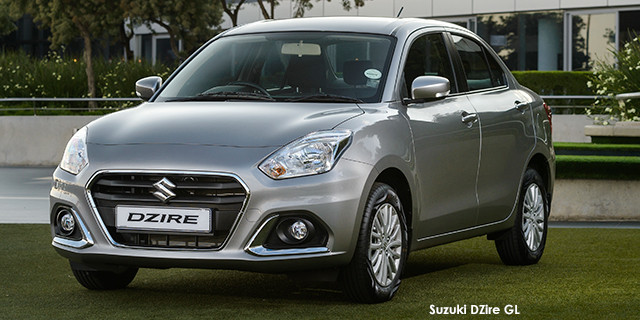They may be more about sensible transport than thrills, but these light sedans are very much the bread and butter of motoring...
Although budget sedans are hardly the stuff of petrolheads’ dreams, they are the Swiss Army knives of the automotive sphere. Their roominess, frugal engines and wallet-friendly ownership propositions make them a great choice for young families and empty nesters alike, as well as the backbone of company and rental fleets.
We sampled the budget-sedan delights of the previous-generation Honda Brio Amaze and Suzuki Swift DZire in our May 2014 issue, where the latter’s more rounded nature at a lower price saw it edge its still-capable rival.
Four years and some considerable increases in living costs later, the all-new iterations of these budget-sedan staples meet again. Will the Amaze possess the polish to snatch a win from its standing rival, or are we about to see history repeating itself?
Packaging
While at first glance you’d be justified in thinking what we have here are little more than cosmetically updated versions of the cars we tested previously, there’s great change afoot under the sheetmetal. Yes, the design updates are welcome; the Amaze’s snub-nosed front-end and distinctive C-shaped brakelamps lend it a bit more presence than before, while the DZire’s tauter, less globular, Swift-inspired looks are similarly refreshing. What’s more important are the frames upon which they’re perched.
Both cars utilise all-new platforms which marginally expand their dimensions and reportedly improve torsional rigidity and safety. Honda rather cryptically describes the Amaze’s underpinnings as “all-new”, giving little else in the way of explanation other than the strong likelihood a budget SUV and other variants will eventually be spun off that platform.
The DZire utilises a modified version of the Heartect platform serving the Baleno and, as is the case with its larger stablemate, the upshot is a spacious interior with a greater amount of head- and rear kneeroom than the Amaze.
Where the Honda claws back some ground is in the load-space department, with a generous 376-litre boot versus the Dzire’s 288-litre item, although it must be noted neither car features split-folding rear seatbacks, so extra kit will have to vie for space with the rear occupants.
There’s little separating the two in terms of loading height and both boots have usefully wide apertures. Neither, however, has gas/spring assistance for the opening mechanism and unlocking the Amaze’s boot from the outside entails manually inserting a key, which seems like a minor oversight but becomes irksome when burdened with armfuls of shopping or kids.
Interiors
In both cases, we’re looking at surfaces awash with hard but durable-feeling plastics which are generally well anchored to the car. We say generally, as one of the trim panels in the DZire’s driver footwell did come loose, but that’s about it in terms of finish-quality foibles.
Suzuki has adopted a functional design for its facia with darker trim colours being the order of the day in an inoffensive yet appealing arrangement. The Amaze’s cabin is more of an acquired taste. The facia is just as simple and logically laid out as the DZire’s, but the beige-and-black colour scheme, allied with a couple of different trim patinas, is bold although also a bit fussy and more likely to show scuffs and other signs of wear than the DZire’s darker trim.
Finding a comfortable driving position is a tad easier in the Amaze thanks to height adjustment for the driver’s seat but, whichever car you’re piloting, the seating positions are fairly perched, combining with generous glasshouses to afford the driver good all-round visibility.
To drive
There’s been little to separate these cars so far, yet, on the open road, the DZire begins to edge ahead of its rival … quite literally. As well as freeing up additional interior space, the new platforms on both cars serve to trim down their kerb weights. At 954 kg and 971 kg, respectively, the previous Amaze and Dzire didn’t exactly set the scales creaking, but the new cars now sit firmly in flyweight territory, weighing just 926 kg and 876 kg.
While the Honda’s 66 kW power output edges the Suzuki’s 61 kW, its taller gearing and leisurely power delivery means keeping up with traffic requires good judgement and regular stirring of the admittedly snappy gearshift. The DZire’s lighter weight, close-set middle gearing overseen by a pleasantly direct shifter and a smidgeon more torque renders it nippier than its rival in almost every respect. The discrepancy is particularly evident in-gear, the Suzuki pipping the Honda at every stage. That said, show either car an uphill section or heavy load and the wind is quickly knocked out of their sails.
When assessing budget sedans, handling characteristics seldom carry much weight, yet these two are neat counters to one another. Although their light kerb weights mean strong crosswinds set both cars weaving, it’s the lighter DZire that feels the effects more acutely. With its progressive steering and extra mass, the Amaze seems the marginally more planted car on the motorway but the drone from the engine as it stretches to stay in the upper reaches of the national speed limit can tire.
In keeping with its nippier performance, the DZire’s pleasantly weighted steering and good body control make it the wieldier car, and its more considered gearing and better mechanical refinement render it reasonably civilised at speed, although it does seem to generate a bit more wind noise around the A-pillar. Thanks to generous ground clearance and soft springs, both cars ride road scars with aplomb but, when traversing large speed bumps, it’s the Honda’s rear suspension that exhibits the greater degree of rebound.
To own
Peeling back the wrapping on either car, you’ll not be confronted with a network of plumbing for turbos or direct injection, nor will there be a nest of wires attached to an array of complex and potentially costly-to-repair electronics. The manufacturers have built both cars with the unforgiving motoring conditions of the Indian subcontinent in mind and have a good track record in producing robust products.
Even if you do have to delve into the parts bin, neither will break the bank. Both are covered by two-year/30 000 km service plans with 15 000 km intervals and a mechanical warranty spanning five years/200 000 km. Their standard specification lists are similar and fairly spartan, with alloy wheels and automatic climate control in the Amaze’s favour.
It’s level pegging on the safety-features front as well, with dual front airbags and rear Isofix anchorage points as standard. ABS with EBD and brake assist features on both cars, but the Honda’s system proved the more effective of the two in our 10-stop 100-0 km/h tests. Neither car will drink you out of house and home, with the Amaze sipping 5,5 L/100 km on our fuel run and the DZire 5,6, equating to estimated tank ranges of 520 km and 629 km, respectively.
TEST SUMMARY
In terms of their general functionality, there's nothing to separate these two. Both cars represent a marked improvement over their predecessors and continue to meet the provisos of spacious, frugal and no-nonsense motoring. But, as it was back in 2014, the Honda's price premium is a catching point.
In most cases, R15 000 shouldn't be a deal breaker, but when it represents a substantial price gap to the DZire's total value at this end of the market, with little more in the way of extra equipment to show for it, the Amaze's appeal begins to wane. Better boot space and marginally more planted motorway manners may be in the Honda's favour but, when it comes to the sum of most considerations, the DZire is the more rounded proposition. That, combined with more competitive pricing, gives it the narrow win here.
*From the December 2018 issue of CAR magazine
ROAD TEST SCORE

|

|

|

|
Original article from Car
















